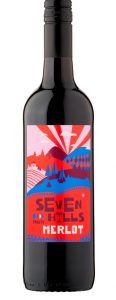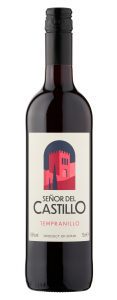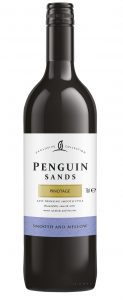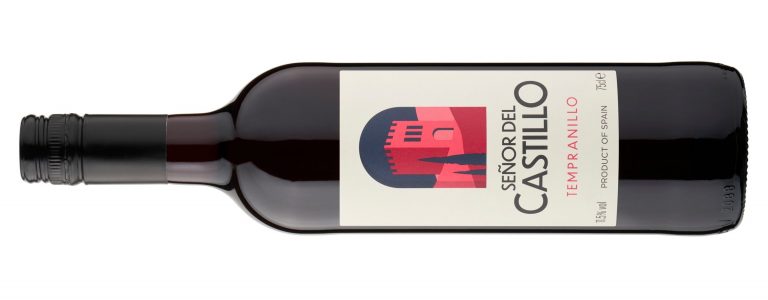Remember the excellent Bergerac MidWeeker Eddie found last year on the bottom shelves of Tesco?
Well, that started me wondering what else might be lurking on those bottom shelves.
Traditionally, less popular products are housed there – but have others been relegated from prime, eye level space a little too hastily?
Thus, Operation Trawlerman was conceived.
In part, the name is a tribute to those folk who brave two forces of nature (the weather and the sea) to provide something I really appreciate – fish.
Here, though, it is descriptive.
Although nets along the ocean floor are not involved, this project also aims to capture something valuable located at the bottom of the available space.
Once again, pictures and hyperlinks are included where possible to make it easier to track down the wine in question.
Summary of Results.
I considered a selection of “bottom shelf” red wines from two supermarkets chosen at random (actually Asda and Sainsbury’s).
Did I find another superstar or was everything I tasted well below par?
The answer to both questions is “No”.
Often the wines had one laudably strong feature but were let down by what supported it (or didn’t).
Problems included a lack of texture or a clumsy imbalance – where one aspect overpowered everything else.
At other times, it was dull or poorly defined fruit components or wine that was just unexcitingly one dimensional.
Enough about the negatives, though, here are three that did score as sound everyday drinking at a generous price.
Let’s get the context right though, these are reliable basic offerings but will never rival first growth claret.
In truth, only rarely are bottom shelf wines likely to match options normally retailing in double figures.
Nevertheless, these examples do have a part to play providing uncomplicated red wine at budget levels.
They should suit occasions when complexity and opulence are welcome, but not essential.
On that basis, do read on.
First a Merlot
2022 Seven Hills Fruity Merlot (£4.75 at Asda and 12.5% abv):

Focus on top selling red wines and it is clear that fruitiness is very much in demand even if that means seriously limiting tannin and even texture.
This well-crafted and unpretentious Hungarian merlot matches that fruit oriented profile well.
It is ideal for times when, for instance, substantial red wine is too heavy, but most rosés have insufficient depth.
Light with only modest texture, it is centred around juicy cherry and red currant flavours.
In addition, though, there are attractive mint, baking spice and chocolate elements to round things out.
Next to Spain
2022 Señor del Castillo Tempranillo (£4.35 at Sainsbury’s and 11.5%):

If Rioja and Ribera represent tempranillo at its pinnacle, this is very much an everyday version with limited alcohol and a vagueness about its region of origin.
It does, however, have well-managed fruit flavours as well as the texture so often missing at this price (and alcohol) point – plus just the right amount of tannin.
Opening with berry aromas, it has herbal cherry, plum and star anise flavours.
Support comes in the form of good acidity, relatively firm tannin and suggestions of cola, fudge and menthol.
And probably the pick of the batch.
Penguin Sands Pinotage (£4.25 at Sainsbury’s and 11.5%):

Pinotage often gets a poor press, but this example from South Africa’s Western Cape illustrates that, even at modest prices, it can tick important boxes well.
Note that it is non-vintage but, if blending between years is what is needed to get the balance right, who wants to argue about that?
Dark in colour and bold, this positions its well-defined black cherry and bramble flavours nicely to the fore.
Those constituents are neatly coupled with good acidity, little tannin and a smooth, aniseed and eucalyptus texture.
The Future.
From time to time, I shall certainly return to the Trawlerman theme with, say, white wines or rosés from other retailers but, please feel free to join in.
Do email me or contribute to this site’s comments section if you discover suitable candidates.
The only requirements are that:
- You found them on a bottom shelf.
- They have a list price under £6.50 (ie not on a price reduction promotion),
- And most of all, you enjoyed them and felt that they deserved promotion from those lower shelves.
Good hunting.
After today’s attempt at innovation, it’s back to the day job trumpeting those competitively priced but great value offerings and featuring them every week as Monday’s Top Tip selections.









12 responses
Hello Brian,
I am 6 foot 6 inches tall and the bottom shelf is a long way down.At times I get on my knees .It is not a great look and hints at desperation.There are echoes of Father Ted in the lingerie department.
However Tesco’s Vista Castelli Montepulciano D’Abruzzo at everyday low price of £5.50 meets your trawlerman requirements and is a good
drop.
Hi Paul,
I have the same problem, although I’m only 6’5″. Luckily I have a wife who’s 5’2″ so when trawling the lower shelves she relays any interesting finds.
However to be honest, we find Lidl has more interesting wines at a better price, although the down side is that when there gone, they’re gone.
Cheers
I am only 6 foot – and shrinking – but still worry that I shall trip up some innocent passing customer while on hands and knees investigating the trawler shelf. The prices shown there are in that irritating space between the focal lengths of reading glasses and driving glasses when standing up. Good to hear from you btw Brian – welcome aboard the Comments section.
I had forgotten that Montepulciano. As you say, a good option (Deep in hue yet medium-bodied, it exhibits attractive blackberry, damson, and black cherry flavours. Lively acidity underpins its traces of nuts, menthol, ginger, and cinnamon – with just a hint of tannin restraint.)
Hi Brian, I like the Trawlerman concept.
A couple of suggestions that meet the below £6.50 threshold. But I notice that: (1) Lidl have their cheaper wines at the bottom AND top of their shelves – their choice wines being in the middle; (2) Morrisons seem to have a random price /shelf level algorithm. So hope my choices are allowed in your Trawlerman’s net.
Lidl Corte Alle Mura Chianti Reserva. The current 2020 vintage tastes like a decent Chianti and costs £6.49. Have tried the 2018 and 2019 vintages, and despite some slight vintage style variations, find it a reliable and good value wine. The last 2018 bottle I drank was getting a touch tired, so generally not really for cellaring, and already looking forward to a fresh 2021 vintage.
Morrisons Soave at £4.99. A pleasant lighter weight white with some charm and character. Again have drunk various vintages, and it seems consistently excellent value. Incidentally I first tried this when my wife asked me to buy a bottle of white Cooking Wine. (It is testament to the quality of wine recommendations, here and elsewhere, that I rarely have an unsatisfactory bottle that is demoted to cooking status!).
I could add a couple of red Riojas, but I think you might be covering these in a future post.
Any white viognier is likely to be drinkable and good value .. Aldi do at least one under £6/bottle
As you found, Jerry., I have also encountered – and recommended – inexpensive Aldi viognier. The grape can be tricky though and when it goes wrong it can do so dramatically.
What an interesting theme today Brian. 3 half-decent bottles at less than £5. I assume they are loss leaders in the true sense given the tax / duty to be paid. The wine equivalent to a Ryanair £9.99 flight when there’s £13 Air Passenger Duty!
One thing that intrigues me though is the bottling and transport costs of such cheap wines. Bulk transportation by ship from the other side of the world and then bottling in the UK addresses the sustainability agenda and no doubt significantly reduces costs of everyday wines. Some producers and retailers in my experience are better than others in providing the relevant information on labels and websites. Today’s three recommendations are a case in point.
Asda’s website notes that the Hungarian merlot is “Bottled for …. At DH9 7XP”. The postcode here indicates Greencroft Bottling, one of the largest bottling plants in Europe.
However, Sainsbury’s website is less consistent in the information it gives about provenance (Perhaps the bottle label offers more?) Under the heading ‘Manufacturer’ the Spanish Tempranillo is produced AND bottled at source in Spain by “J. García Carríon, 30520 Murcia” but the same section on the page for their South African Pinotage seems to be already expecting the worst by simply stating “We are happy to replace this item if it is not satisfactory” followed by the Customer Services address and phone number!
I am glad you liked the concept; it was an attempt to try a different approach.
Equally, though, I don’t pretend to understand the pricing structure agreed between producers and retailers. If a price is a loss leader, why hide it on the bottom shelf? Nowadays, I just take it at face value and respond to the prices as shown.
On the other issue you raise, bottling in the UK obviously has energy consumption advantages if the bottle does not have to be conveyed. However, the process has to be meticulous – as the bigger operations will undoubtedly do – and I do sometimes find examples which, I feel, may have suffered in the bottling process. But, then, that can happen even if the wine is bottled by the producer.
This is an interesting proposition Brian.
Going back to that bottle of Eglise Saint-Jaques at Tesco reminds me of how I spotted it in the first place. A very ordinary label and its location WAS on the bottom shelf!
So it was a ”lucky spot” in part, routinely checking the online advertising and attractive Clubcard reductions as well as a further 25% off at Tesco. But who trawls the websites to know all these things?
I knew immediately what it was, with a provenance I recognised from personal experience, even luckier when it turned out to be wholly authentic and enjoyable, even though anomalous with what we usually expect to find at Tesco. Red Bergerac for goodness sake!! But being available and cheap is not the same as value for money if it doesn’t work!
That’s not to say everyone will like it and as with many a discovery bottle there are never any guarantees especially where more rustic characteristics are involved authenticity doesn’t win everybody over.
We are back in the realms here of that elusive, cheap but outstanding Bordeaux bottle. This Eglise Saint- Jaques is also a Merlot but a long way from the fruit forward and excellent M&S Bordeaux mentioned earlier this week. But that doesn’t fit the model starting at £10.
The bottom line is, I knew precisely where it was from, had previously enjoyed this kind of thing in situ and it had its own story for me **. I’m sure it has been the case more often these past few decades that folks returned from their trips abroad and discovered that something that defined their happy holidays was being sold in their local supermarket here. Double the pleasure from those bottles that ”travel” well.
Whether this goes some way towards encouraging your readership to go trawling as I do, eyes wide open, responses hopefully will offer other folk’s experiences. And just to say in this respect I’m lucky being of small stature so I can access the bottom shelf quite easily. Ha!
** Julian de Savignac is a caves outlet in the small Perigord town of Le Bugue, close to where the Vézère meets the Dordogne at Limeuil. In the series of books by Martin Walker about the imaginary exploits of the heroic local Chef de Police, Bruno Courages, the town becomes St. Denis by name, although the whole surrounding district does retain its exact identification. Julian de Savignac as well as being a prominent wine retailer in France has Bergerac vineyards and their own extensive range across the price spectrum. These Savignac wines are very much of the same character as Eglise St Jaques. I still marvel at being able to have something so like them, here on the bottom shelf at Tesco, without needing to drive 900 miles each time!!
A great background story, Eddie.,that neatly highlights how European holidays shaped and changed the UK view of wine drinking in the final third of the last century.
It also underlines the motivation behind Operation Trawlerman by illustrating how sound wine can sometimes, harshly, descend to the bottom shelves based – perhaps – on sales figures alone.
In my enthusiastic eagerness to ”tell a little story” I missed out on making a couple of suggestions that do fit the model.
Asda have a Vinho Verde, Torre de Lapela. For those who have had a Portuguese experience, along the Algarve coast, then a cold glass of cheaper Vinho Verde with their grilled sardines reveal it’s more than typical, but not to be dismissed just because it is commonplace.
This Asda bottom-shelfer is usually £5.50. It gets a very good response from the general public and a 2023 Decanter silver medal. I still have a bottle by me now. It’s exactly what it should be … light … petillant ..evocative of fishy lunches spent out on the Isle of Tavira and god forbid on a current 25% deal it is £4.12!! They are giving it away!
I’ve always had a soft spot, for years, for the Lidl Cimarosa South African Western Cape Chenin Blanc at £4.49. Spending £2 more for their deluxe South Africa Fairtrade Chenin Blanc, Paarl, £6.49, will get us a better bottle no doubt, but when Lidl only had one such Chenin available it was this Cimarosa.
But can’t say if they have maintained standards over the years. That is the problem with suggesting something I currently have not had. And the cheaper end vintages do seem to suffer most.
Thinking of that Montepulciano d’Abruzzo that was €1.99 in Lidl France and the self-same bottle £2 more here, excellent when first spotted. Now it’s £5.49, and in the middle! It became so poor 5 years ago.